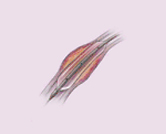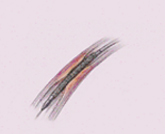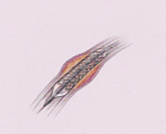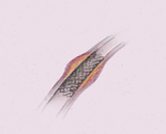Cardiac Procedures
Angioplasty & Stenting
In order to relieve your symptoms you may be advised to undergo a coronary angioplasty and stenting procedure. This will be recommended if you have a tight narrowing in your coronary artery.
This procedure improves the blood flow to the heart muscle.
A guide catheter, which is a narrow flexible tube, is positioned, via your groin or your arm under X-Ray control in the origin (beginning) of one of the coronary arteries. A very soft wire is passed down the lumen (central hollow channel) and through the narrowing in the artery. A thin plastic tube with an inflatable balloon is passed over the wire and the tip with the balloon is positioned inside the narrow section of the artery.
The balloon is inflated so that it compresses the tissue responsible for the narrowing. As a result, this widens the artery. This balloon or a second balloon will have a metal mesh, 'stent' compressed over the balloon. The stent is expanded as the balloon is inflated and acts as scaffold for the lining of the artery. This reduces complications and the chance of the artery re-narrowing. The balloon is then deflated and withdrawn leaving a wider channel for blood to flow through.
Drawings courtesy of Medtronic

Balloon deflated

Balloon Inflated

Balloon After Withdrawal

Stent prior to Expansion

Stent Expanded

Stent Expanded and
holding artery open

